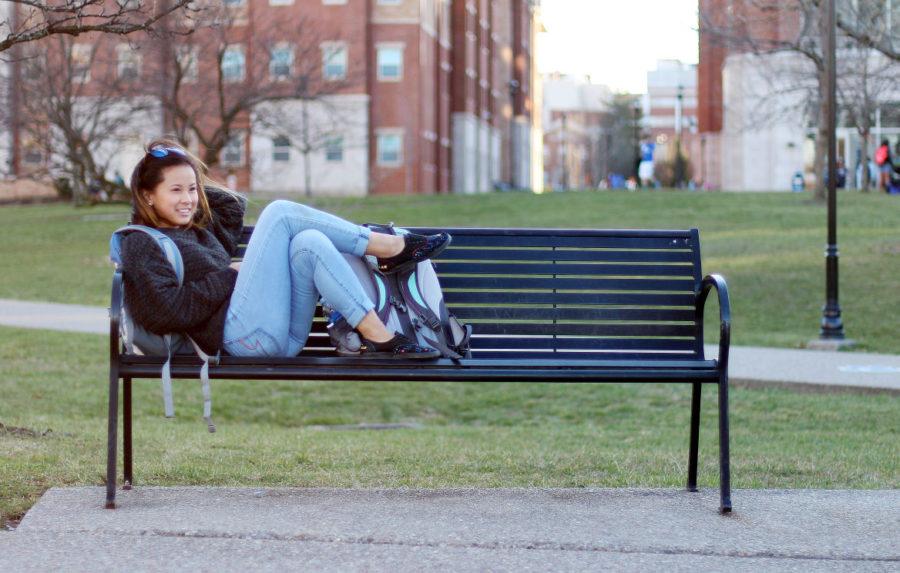Racial gaps in higher education worsening
Student relaxing on a bench outside of the William T. Young library at the University of Kentucky in Lexington, Ky. on Tuesday, March 8, 2016. Photo by Josh Mott | Staff.
March 10, 2017
According to a new study by Young Invincibles, a national youth interest group, racial gaps in higher education are not only not getting better; they’re worsening.
The study compared college completion in 1974 and 2015 and found that the divide between white student degrees and black student degrees grew by 5.2 percent and for Hispanic students, it grew by 12.2 percent.
Another study by the National Center for Education Statistics found that college enrollment among the different races are generally the same, more minority students attend for-profit schools and community college, which often lead to lower salaries.
The relative cost of college should also be considered, as tuition rates affect families in different ways. Even though white families tend to pay more in college tuition (often a result of school choice), the costs of a college education only take out 44 percent of their family income. For African American households, college costs take up nearly 63 percent of their income, while Hispanic families typically pay 53 percent of their family income on a college education.
The fact that these gaps still exist concerns many, as quality of education is often a large determinant of overall income and socioeconomic status.
To read the full article in USA Today College, click here.














































































































































